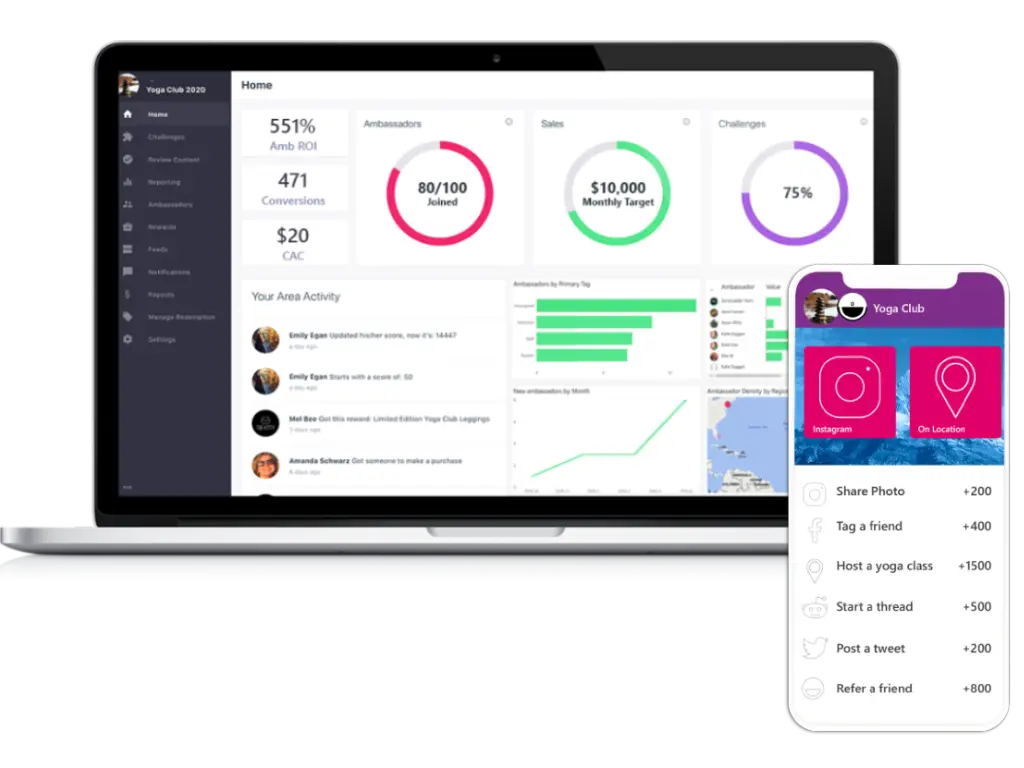
The biggest influencer marketing trend at the moment is partnering with micro-influencers over a long period of time.
This was a result of typical campaigns with huge influencers for a single post not performing as well anymore.
Marketers and CMOs have now figured out that consumers seek authenticity more than anything else when it comes to brand marketing.
And ongoing collaborations with micro-influencers are as authentic as you can get.
In this article, you’ll learn how and where you can find the right micro-influencers for your brand.
What are micro-influencers?
First, we need to make a quick clarification.
“Micro-influencer” has become the go-to term when referring to creators with a small following.
However, there are actually 6 types of influencers based on how many followers they have.
- Nano influencers: 1,000 – 10,000 followers
- Micro influencers: 10,000 – 50,000 followers
- Mid-tier influencers: 50,000 – 500,000 followers
- Macro influencers: 500,000 – 1 million followers
- Mega influencers: 1 million – 5 million followers
- Celebrity influencers: Over 5 million followers
In this article, when we talk about micro-influencer we will also be referring to mid-tier influencers and nano influencers.
Why micro-influencers?
As we mentioned before, micro-influencers are perceived as more authentic than big influencers.
88% of people say it’s important for influencers to be authentic and genuine.
This happened for a couple of reasons, but mainly because large influencers do many sponsorships.
Since every brand wants to work with them, influencers sometimes promote products even daily.
So, when they recommend too many products, consumers trust those recommendations less.
It makes it hard for people to know if they are recommending a product because they actually liked it or because they got paid.
There is nothing wrong with being paid to promote something, however, genuine opinions are what consumers look for when making a purchase decision.
On the contrary, micro-influencers only participate in one or few brand partnerships at the same time.
In addition, small influencers are much more approachable.
Micro-influencers generally have a deeper connection with their community because people can interact with them.
And a deeper connection often means that the people trust their product recommendations more.
Another reason why you should consider micro-influencers is that they are much more affordable than big influencers.
This allows small businesses to have an influencer marketing strategy without a huge budget.
Where to find micro-influencers for your brand
Finding ideal micro-influencers for your brand is not too different from finding big influencers.
The methods are similar, however, the challenging part is that there are way more micro-influencers and nano-influencers than celebrity influencers.
So your vetting process needs to be great.
Otherwise, you will find yourself with mediocre results because their audience doesn’t connect with your products.
These are the best places to find micro-influencers and how to do it.
Your customer base
We’ve talked about how this type of creator is effective because of their authenticity.
And no one can be more authentic about their liking for your brand than a customer.
So the best place to find creators of this size is your customer database.
Plus, there should be many micro-influencers in your database you can choose from.
The easiest way to do this is to use a tool like SocialLadder, which can access your CRM and scan your customer database.
Then, the platform finds their social media accounts, contact information, statistics, and gives you a score based on how good of a fit they are for your brand.
You can also filter through everyone’s profiles based on the characteristics you’re looking for.
Finally, you can invite and onboard them from the same platform.
If you’re not interested in acquiring a tool just yet, then your other option is to email your customers.
You can email everyone in your database telling them that your brand is interested in authentic creator partnerships and if they want to participate, they have to submit an application.
Then, you can look through everyone’s applications and approve the ones that seem promising.
Another way to do it is to first research your customers and then send emails only to the promising candidates.
The only problem with these last 2 methods is that you will have to spend a lot of time doing manual tasks, you will likely have too many applications to handle, and some opportunities will be missed because not everyone is checking their emails.
Influencer databases
Some tools have huge creator databases that you can sort through to find candidates.
You can filter by number of followers, demographic, niche, location, and much more.
These influencers may or may not be fans of your brand so you really need to do research the accounts that look promising to see if they are a great fit.
SocialLadder also offers a creator database with 38 million profiles you can browse through.
This way you don’t miss out on great partnerships with people that aren’t in your customer database yet.
Social Media
Obviously, social media is also a great place to find your ideal influencers.
To do so, first, think about the characteristics you’d like in your creators.
Then, start brainstorming creator profiles that come to mind.
Look into them to see if they’re a good fit and then look at the related accounts.
Also, look into the accounts that follow you.
These people are more connected to your brand so a partnership with them would feel a lot more authentic since they are fans.
If they are customers, even better.
Finding influencers in social media does involve a lot of manual research, but if you spend a good time on it, you should end up with a strong list of candidates.
After that, all you need to do is reach out to them through DMs.
You can also try commenting on their posts to get their attention and generate a little buzz.
Recommended: Best Influencer marketing tools in 2022: A review
Your employees
Employee advocates are just as effective as micro-influencers.
Why?
Because people trust recommendations from people they know.
83% of consumers trust recommendations from family, colleagues, and friends about products and services – making them the highest-ranked source for trustworthiness.
As you can see, if someone recommends a product or service to a friend, that person is more likely to purchase it than if a huge influencer did it.
And since you’re looking for micro-influencers, it doesn’t matter how many followers your employees have.
They can still provide value to your campaigns.
Talk to your employees to see if they’re interested and offer bonuses for completing social media tasks.
Final tips
It can’t be understated how important it is for your micro-influencer partnerships to feel authentic.
So make sure you find people that actually care about your brand and collaborate with them over a long period of time.
Longer partnerships are better because people can see the connection between you and the creators, making the messaging much more genuine.
Finally, don’t be afraid to partner with many micro-influencers at the same time.
The great thing about this type of creator is that they’re more affordable and you can reach millions of people with the combined following of all your influencers.
Brands often have hundreds or even thousands of micro-influencer partnerships simultaneously for this reason.
And you can even offer other compensation methods that make sense for you.
Like free products, discounts, or commissions.





